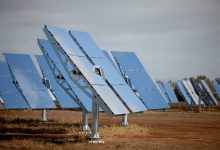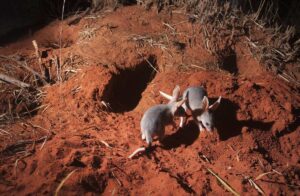A Victoria-made “dispatchable” concentrated solar and hydro storage technology is set to be tested at a pilot-scale in the state’s north west, with the backing of the federal government’s Australian Renewable Energy Agency and in partnership with AGL Energy.
The company behind the technology, RayGen Resources, said on Thursday it had locked in $3 million in funding from ARENA, to test the technical and commercial feasibility of its concentrated solar and thermal storage technology – or “solar hydro” – that uses mostly mirrors and water to generate power and heat.
The flagship project, which is being developed in partnership with major Australian gen-tailer AGL, will deliver 4MW of solar generation and 3MW/50MWh (17 hours) of storage that RayGen says will be able to supply the grid with “day-night renewable electricity” and support grid reliability.
The project would also be able to supply synchronous power where it is critically needed in the West Murray region, a notoriously “weak” area of the national grid that has seen the output of five solar farms cut by half and dozens more projects warned of delays to both commissioning and connection approvals.
“RayGen’s flagship 4 MW/50 MWh plant is expected to offer storage at a fraction of the cost of recent battery projects,” said RayGen CEO Richard Payne in a joint statement with ARENA.
“The project is in a renewable energy zone that has limited capacity to support pumped hydro. We will also be supplying synchronous power to the grid where it is critically needed in the West Murray region.”
RayGen said the funding from ARENA – its third grant from the federal government Agency in the space four years – would help get the pilot project to financial close and make it shovel ready for construction, with the aim to have it commissioned in 2021.
As we have reported on RenewEconomy and One Step Off The Grid, the Melbourne-based RayGen Resources has been chipping away at the Australian renewables market for some years now.
The technology developed and patented by RayGen founder Dr John Lasich combines low-cost heliostats (mirrors) and top of the range, ultra efficient gallium arsenide PV cells – the sort that are used in space – to provide and power and heat (storage) resource.
As was explained to One Step here, like other concentrated solar technologies, it works using a field of mirrors that track the path of the sun and focus its light onto a receiving tower. But from there, the technology does things a little differently.
“What we do that’s different, is that we have a PV panel, using very high efficiency PV cells, atop the tower so we convert the light directly to electricity,” said RayGen’s head of sales, Will Mosley, back in 2018. “And then because we have to actively cool this panel (using water), we generate heat (hot water) as a byproduct.”
“Australia’s energy transition will require storage solutions that can store power cost-effectively for hours, days or weeks and be deployed at large scale around the world,” said RayGen’s Payne in comments this week.
“RayGen has developed an innovative solar-plus-storage product that captures sunlight with mirrors and stores energy in water. Our technology provides firm renewable power at low cost, while conserving natural resources and our environment.”
On that front, the technology can boast the production of near zero e-waste, with a solution that is mostly mirrors and water.
The thermal storage technology stores energy as a temperature difference between two water reservoirs. The heat generated from the PV Ultra is used to charge the hot reservoir, whilst the cold reservoir is cooled using an electric chiller supplied with electricity from PV Ultra and the grid.
The stored temperature difference generates power with a synchronous heat engine (Organic Rankine Cycle), stores electricity with around a 70 per cent round-trip efficiency and provides full depth of discharge and zero degradation of storage medium (water) with cycling. As a final added bonus, it can also enable dual use with agricultural grazing beneath the solar field.
“With RayGen’s project we’re seeing homegrown innovation in solar PV now being used to find new solutions for dispatchable renewable energy,” said ARENA CEO Darren Miller on Thursday.
“While this solar and thermal storage plant works similarly to a solar farm combined with a pumped hydro facility, the advantage of RayGen’s approach is that it can be deployed at a smaller scale and at a much lower absolute cost.
“With ARENA’s funding, RayGen is aiming to progress this project to be shovel ready by the end of this year and to prove its novel technology can be cost-competitive with batteries and pumped hydro,” Miller said.
Even federal energy minister, Angus “technology not taxes” Taylor, is a fan, describing the project as a terrific example of how innovative technology development could potentially provide secure, dispatchable power and reduce emissions.
“We’re taking full advantage of the technology innovations we’re seeing right across Australia,” Taylor said in a statement on Thursday.
“The government will continue to support technology development that will not only reduce emissions and improve energy security but has the potential to create new jobs in regional Victoria.”










